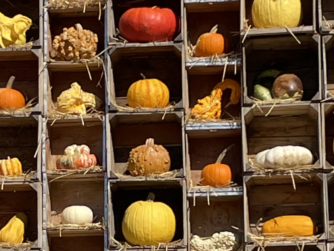Hello darkness, my old friend I’ve come to talk with you again Because a vision softly creeping Left its seeds while I was sleeping And the vision that was planted in my brain Still remains Within the sound of silence
Ugh the good old Fall Back in Fall: Daylight Saving Time and Seasonal Affective Disorder.
As autumn ushers in cooler temperatures and colorful foliage, it also brings with it a somewhat peculiar tradition: the end of Daylight Saving Time. For most, the one-hour time shift provides a little extra sleep, but it also marks the beginning of a darker and colder months. This transition can significantly impact our mental and emotional well-being, and for some, it can even lead to a condition known as Seasonal Affective Disorder (SAD).
I remember back in the early aughts when I lived in LA which was usually always sunny and the perfect temp there was a period of a week straight of gray skies and rain. I was driving to the gym to workout and at a red light, this sadness overcame me. I had no idea what was happening. I was always a glass half full type of girl plus I had nothing to be sad about. A few years later I first heard of the term SAD or Seasonal Affective Disorder.

So what exactly is The End of Daylight Saving Time:
Every year, on the first Sunday of November, many of us set our clocks back by one hour, effectively “gaining” an extra hour of sleep. While this may sound like a small change, it can have a huge effect on our daily routines and overall mindset.
Here are a few ways in which “falling back” can affect us:
1. Decreased Sunlight Exposure:
With the clocks shifting, we lose an hour of evening daylight. The shorter days and less exposure to natural light can lead to a drop in our mood and energy levels.
2. Disrupted Sleep Patterns:
While the time change may grant an extra hour of sleep, it can disrupt our internal body clock, leading to sleep disturbances, particularly for those with sensitive sleep patterns.
3. Adjusting Daily Routines:
Changing the time on the clock can require an adjustment in our daily routines, affecting our productivity, concentration, and overall sense of time.
The Connection to Seasonal Affective Disorder (SAD)
For some of us, the transition to the darker months can trigger a more serious condition: Seasonal Affective Disorder (SAD). SAD is a form of depression that typically occurs during the fall and winter months when sunlight is limited. Some common symptoms of SAD include:
– Persistent feelings of sadness and hopelessness
– Increased fatigue and sleep disturbances
– Changes in appetite, particularly a craving for carbohydrates
– Difficulty concentrating and making decisions
– Social withdrawal
Coping with the Changes
Dealing with the end of Daylight Saving Time and the potential onset of SAD doesn’t have to be a gloomy experience. There are strategies you can adopt to help you navigate this time of year more effectively:
1. **Light Therapy:**
Consider investing in a light therapy box, which mimics natural sunlight and can help alleviate some of the symptoms of SAD.
2. **Maintain a Routine:**
Stick to a consistent schedule, even with the time change. This can help regulate your internal body clock.
3. **Stay Active:**
Exercise is a proven mood booster. Engage in physical activity regularly to help combat feelings of sluggishness and low energy.
4. **Seek Support:**
If you find that the change in season is significantly impacting your mood and daily life, consider seeking professional help. Therapists and counselors can provide strategies to cope with SAD.
5. **Enjoy Cozy Activities:**
Embrace the autumn and winter seasons by engaging in cozy activities like reading, baking, or spending quality time with loved ones.
6. **Maintain a Healthy Diet:**
Be mindful of your diet, ensuring you consume a variety of nutrient-rich foods. A balanced diet can positively impact your mood.







